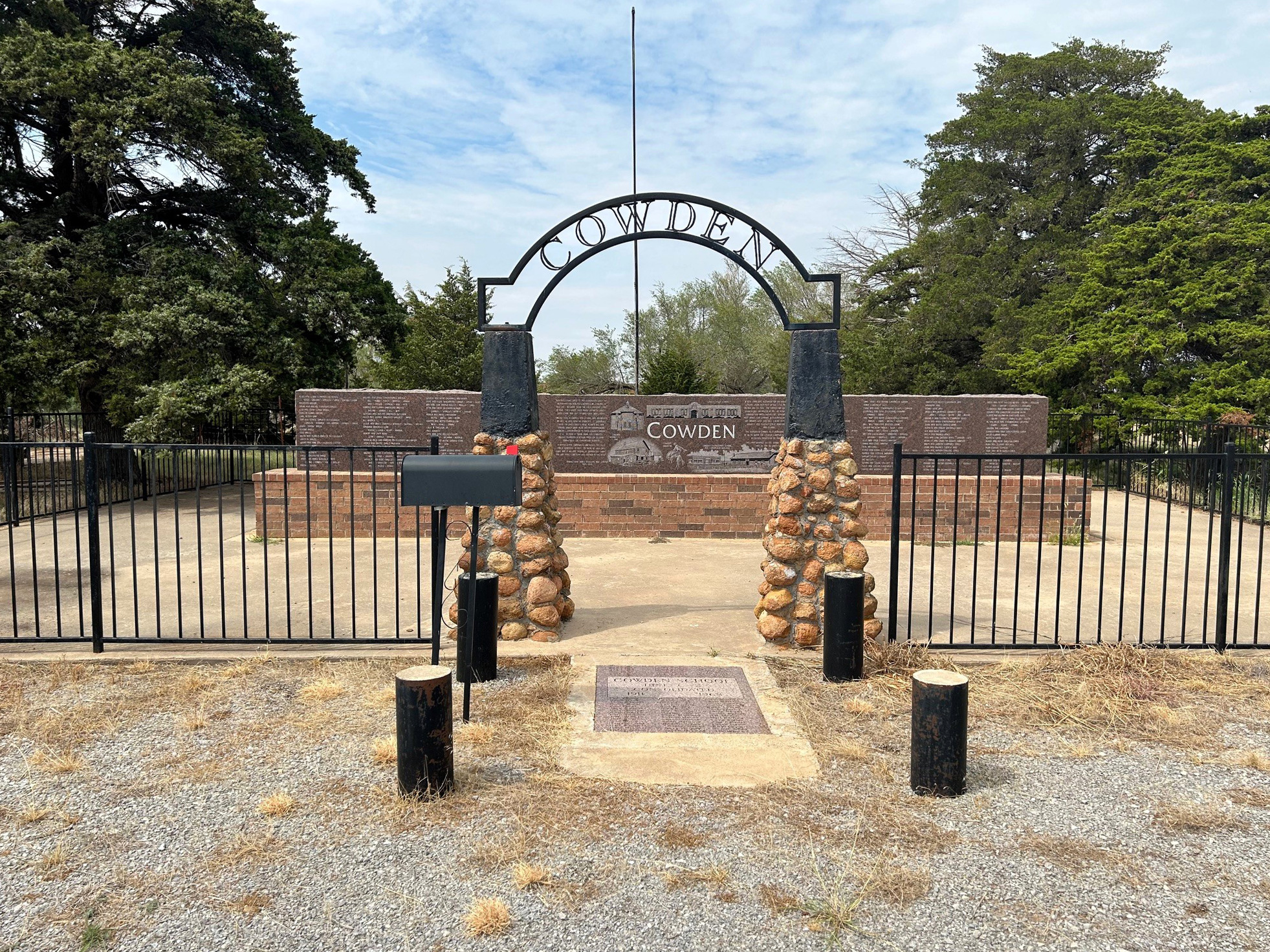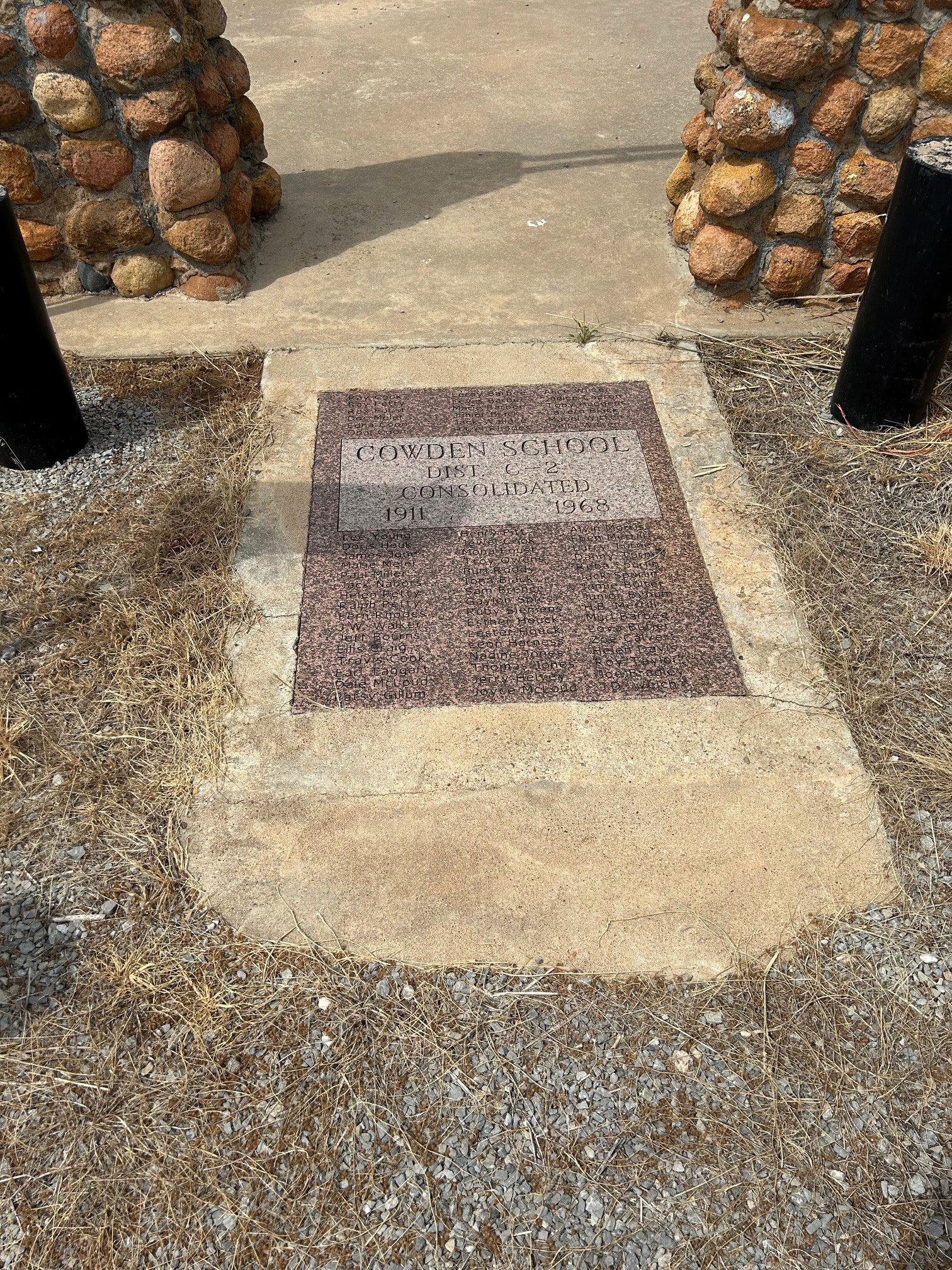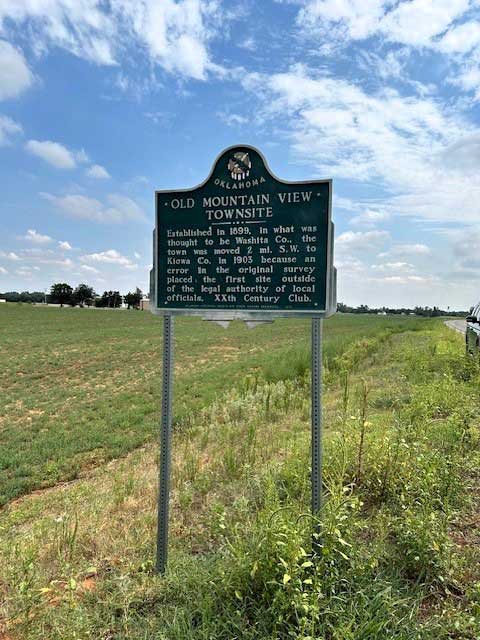
Historical Marker Program
Search Results
Your search returned 15 results.
Canute
Washita CountyLocation: on I-40 in Canute
Material: Granite
Topics: Government; Territorial Period, 1861–1907; Urban Development
Initially called Oak, this town was named for the king of Denmark. The first post office was established on February 24, 1899.
Cloud Creek
Washita CountyLocation: on county courthouse grounds in Cordell
Topics: Early Statehood, 1907–1941; Environmental/Cultural Ecology; Government; Water
The government constructed 1,140 conservation dams in the Washita River Basin, of which Cloud Creek was a part.
Cloud Creek Dam No. 1
Washita CountyLocation: on OK-54B in Colony
Topics: Early Statehood, 1907–1941; Environmental/Cultural Ecology; Government; Water
This was the first of more than 1,000 dams built in the Washita River Basin and the first of more than 10,000 flood control dams constructed in the United States by the USDA Soil Conservation Service.
Colony
Washita CountyLocation: on OK-54B in Colony
Coordinates: 35.348528, -98.676259
Material: Granite
Sponsor(s): Oklahoma Historical Society
Topics: Settlement Patterns; Early Statehood, 1907–1941; Education; Religion/Philosophy; Retailing; Social/Culture; Territorial Period, 1861–1907
One of the oldest towns in western Oklahoma founded in 1886 by John Seger and the Cheyenne-Arapaho on the banks of Cobb Creek. Seger Indian Industrial School operated here from 1892 to 1932. Local tradition holds this was a starting point for the Land Run of 1892. Dutch Reformed Mission opened here in 1895. Post Office Established January 8, 1896. Buildings on this block built in 1920s by Fred Kauger and restored by Oklahoma Supreme Court Justice Yvonne Kauger. Long before the 20th century, Native Americans occupied the surrounding land. George Bent lived in the area and is buried nearby. Pow wows held here since late 1930s by Cheyenne-Arapaho tribes. Also see marker for Seger Colony (no longer in existence).
Cordell Academy
Washita CountyLocation: on US-183 at Third Street in Cordell
Material: Aluminum
Topics: Early Statehood, 1907–1941; Education; Religion/Philosophy; Territorial Period, 1861–1907
Built in 1906 as a Dutch Reformed Church project, the school operated until 1911. The school's stated goals was to teach youth Christian living.
Cordell Christian College
Washita CountyLocation: at US-183 and Second Street in Cordell
Topics: Civil Rights; Early Statehood, 1907–1941; Education; Religion/Philosophy
The college began in 1907 and operated until 1931 under the names of Cordell College, Western Oklahoma Christian College, and Oklahoma Christian College.
Corn
Washita CountyLocation: on OK-54B in Corn
Topics: Agriculture; Early Statehood, 1907–1941; Education; Religion/Philosophy
In 1893, forty Mennonite families settled the area and brought 'Turkey red' wheat to plant in the western Oklahoma soil. The original name of the settlement was Korn but was anglicized to Corn in 1918 during the war with Germany. The Korn Bible Academy, one of the state's oldest parochial schools, opened in 1903. The town of Corn was incorporated in 1954.
Cowden
Washita CountyLocation: on E1220 Rd east of intersection with OK-115
Coordinates: 35.247848, -98.708873
Material: Granite
Topics: Early Statehood, 1907–1941; Land Openings; Settlement Patterns; Territorial Period, 1861–1907
Dedicated in honor of the individuals and families who established the Cowden community. First homesteaders arrived in 1892. A church and school were organized one year later. Post office opened in 1904. Cowden had several businesses, a general store and post office, blacksmith shop, gas station, and a cotton gin. Cowden School remained open until 1968.



Lake Valley School
Washita CountyLocation: seven miles north of Gotebo on SH-54
Material: Granite
Sponsor(s): People of Lake Valley Communmity
Topics: Education; Territorial Period, 1861–1907
The site of Lake Valley School District #4 was located within the original East Bethel School District #15. The site was established during the school term 1892–1893 with approximately thirteen and one-half square miles.
Old Mountain View Townsite
Washita CountyLocation: on OK-115, 1 1/2 miles north of Mountain View
Coordinates: 35.119820, -98.740802
Material: Aluminum
Sponsor(s): Mountain View Twentieth Century Club
Topics: Government; Settlement Patterns; Territorial Period, 1861–1907; Urban Development
Because of an error in the original survey, Mountain View was established in Washita County in 1899. When the error was discovered in 1903, the town was moved two miles southwest into Kiowa County because the legal proceedings to approve the first site were invalid.

Port School
Washita CountyLocation: on OK-44, six miles south of OK-44 and OK-152 junction
Material: Granite
Topics: Education; Industrial Period, 1841–1892; Religion/Philosophy; Social/Cultural
Port School, constructed in the center of the school district, once was considered the largest consolidated school in the nation. It closed in 1966.
Red Bluff Community Church
Washita CountyLocation: on OK-152, five miles west of Cordell
Material: Aluminum
Area residents organized this Baptist church in 1898 and constructed the building one mile west of Red Bluff School in the early 1900s. The church served the area until the 1960s, when the building was moved into Cordell to be used as a lodge hall.
Seger Colony
Washita CountyLocation: on OK-152, two miles east of OK-115 junction
Coordinates: 35.290939, -98.680928
Material: Aluminum
Sponsor(s): Oklahoma Historical Society and the Oklahoma Department of Transportation
Topics: American Indians; Education; Religion/Philosophy; Settlement Patterns
Seger Colony was opened by the Cheyenne and Arapaho in 1886 under John H. Seger, a missionary widely known for his work among the Plains Indians in western Oklahoma. A school opened in 1893. Some of their original buildings can be seen in the community of Colony.
Note: This marker no longer exists.

Site of first Washita County Court House
Washita CountyLocation: southeast of OK-54 and OK-152 junction
Material: Granite
Topics: American Indians; Government; Territorial Period, 1861–1907
Cloud Chief, originally Tacola, served as the first county seat. The area was settled by land run on April 19, 1892. On August 7, 1900, citizens voted to move the county seat to Cordell, but the US Supreme Court voided the election since the US Congress had designated Cloud Chief the county seat. In 1906, Congress officially named Cordell the county seat.
Tacola/Cloud Chief School
Washita CountyLocation: on county courthouse grounds in Cordell
Material: Granite
Topics: Education
Created in 1892, Tacola School met in a dugout until 1894 when a 30' x 50' building was built 1/2 mile southwest of this marker. In 1918, the school moved to a new building north of this marker. During the 1921 consolidation of school districts, the name changed to Cloud Chief. The high school moved to Cordell in 1958 and the school closed in 1960.
(Page 1 of 1)
Marker Search
Browse by County
Alfalfa County
Atoka County
Beaver County
Beckham County
Blaine County
Bryan County
Caddo County
Canadian County
Carter County
Cherokee County
Choctaw County
Cimarron County
Cleveland County
Comanche County
Cotton County
Craig County
Creek County
Custer County
Delaware County
Dewey County
Ellis County
Garfield County
Garvin County
Grady County
Grant County
Greer County
Harmon County
Harper County
Haskell County
Hughes County
Jackson County
Jefferson County
Johnston County
Kay County
Kingfisher County
Kiowa County
Latimer County
Le Flore County
Lincoln County
Logan County
Love County
Major County
Marshall County
Mayes County
McClain County
McCurtain County
McIntosh County
Murray County
Muskogee County
Noble County
Okfuskee County
Oklahoma County
Okmulgee County
Osage County
Ottawa County
Pawnee County
Payne County
Pittsburg County
Pontotoc County
Pottawatomie County
Pushmataha County
Roger Mills County
Rogers County
Seminole County
Sequoyah County
Stephens County
Texas County
Tillman County
Tulsa County
Wagoner County
Washington County
Washita County
Woods County
Woodward County
To find out more about the Oklahoma Historical Society Historical Marker Program or how to submit an application, please visit the Historical Marker Program page.
Missing or Damaged Markers
Please use our online form to report missing or damaged historical markers.
Report Missing or Damaged Markers
Contact Us
If you have questions, please contact:
Matthew Pearce
Oklahoma Historical Society
800 Nazih Zuhdi Drive
Oklahoma City, OK 73105
405-522-8659
matthew.pearce@history.ok.gov





